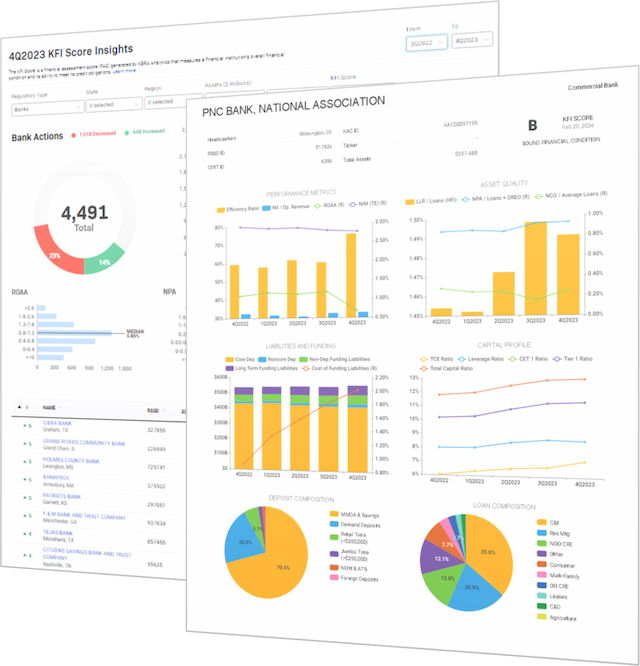KBRA Financial Intelligence
CRE Delinquency Rates Muted Among Community Banks; Highest for Largest Lenders
By KFI Staff
The commercial real estate (CRE) crunch widely discussed to hit small and regional banks is so far having a bigger impact on the largest lenders, according to a KBRA Financial Intelligence (KFI) analysis of all U.S. banks.
Megabanks (>$100 billion in assets) reported higher delinquency rates (1.27%, +$12 billion) and a bigger percentage jump in overdue payments compared with their smaller counterparts in Q1 2023. This was double any other peer group and the highest since 2013.
While lenders below $100 billion in assets hold almost two-thirds of all bank CRE loans, this group typically finances smaller projects like suburban offices, strip malls, and smaller warehouses and industrial properties. Their CRE exposure is often overstated as the total can include owner-occupied CRE loans, which are essentially commercial loans that use a borrower’s real estate as collateral.
Bank Earnings Headwind, not Contagion Risk
Concerns that smaller bank CRE is a ticking time bomb is overblown, according to KBRA’s chief strategist Van Hesser. "CRE exposure is not shaping up to be a solvency or contagion risk to the industry," Hesser said. "It’s more of an earnings headwind that banks will have to navigate over the next several years."
Lending limits have insulated smaller banks from large office buildings, currently the most problematic CRE property type.
Offices, especially in the largest cities, have yet to recover three years on from the pandemic’s onset in March 2020. Companies are still employing flexible work-from-home schedules. Office occupancy rates are hovering at about 50% of pre-pandemic levels, according to Kastle Systems, which tracks office building security swipes.
Office is also the fastest growing segment of KBRA’s Loan of Concern (K-LOC) Index, which serves as KBRA Credit Profile’s primary metric to measure stress in the CMBS conduit market.
That said, defaults of large office buildings are unlikely to materially impact small and regional lenders, according to Andrew Gibbs, senior vice president at Mercer Capital. The current stress in the office market parallels declining regional malls, he said. Small banks were unable to handle those large loans, so losses on regional malls were taken on by CMBS investors and, to a lesser degree, regional and larger banks.
"I see the office situation as being more confined to larger banks and CMBS than the community bank space," Gibbs said.
3 Things in Credit
Follow Van Hesser’s 3 Things in Credit podcast. From the May 22 episode:
"We’ve spent quite a bit of time talking about the consumer and just how much spending juice is left in what is the bedrock upon which our economy sits. Retail sales, out this week, continue to limp along, but with a gravitational pull lower."
